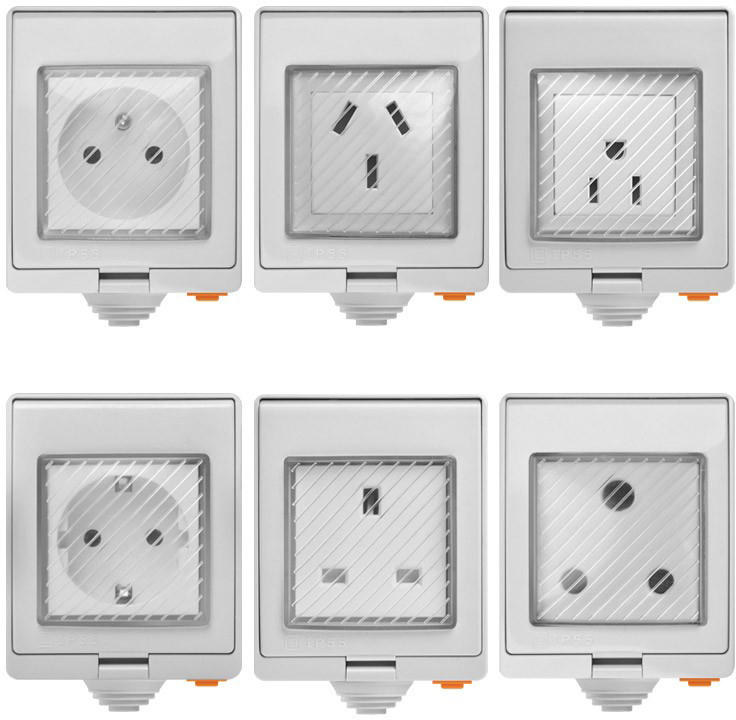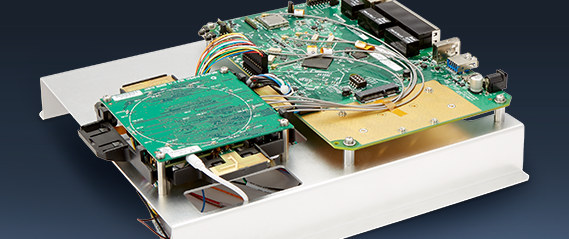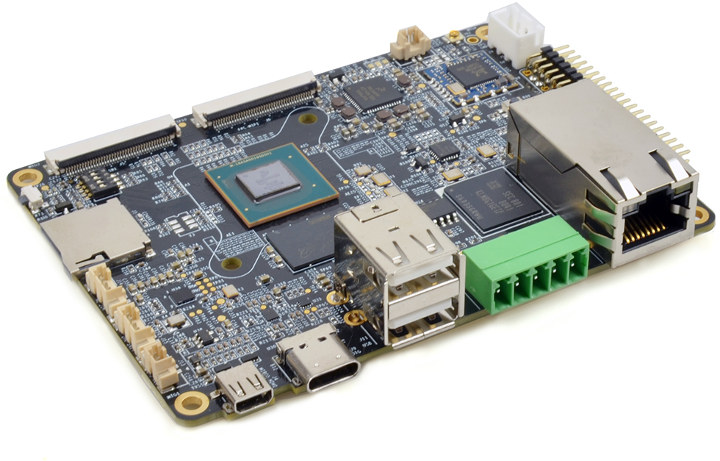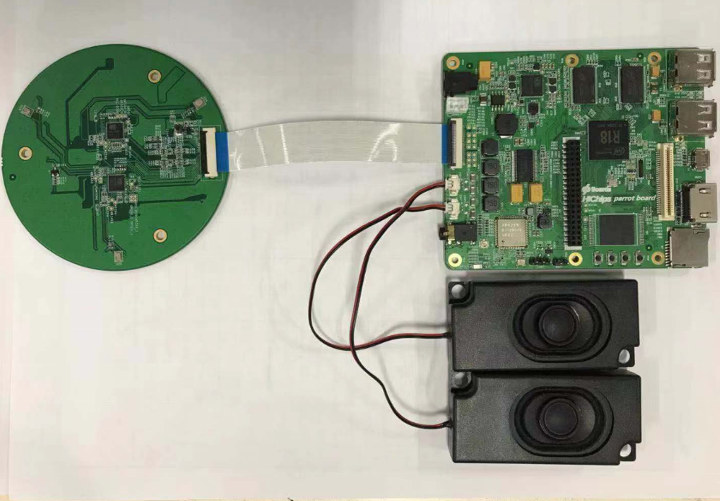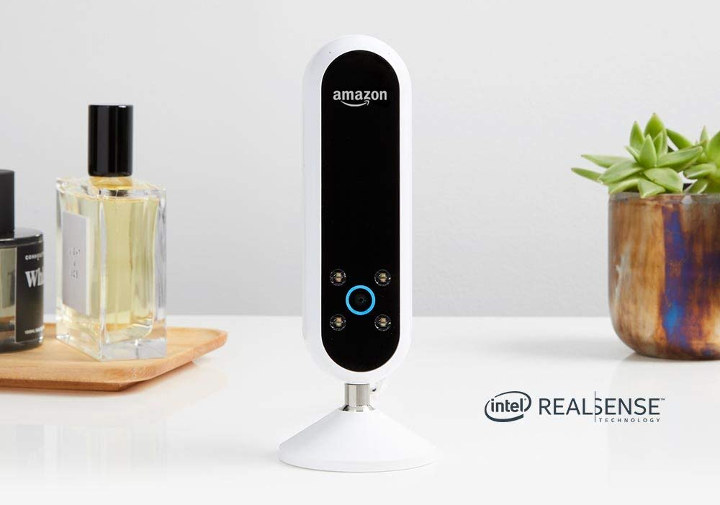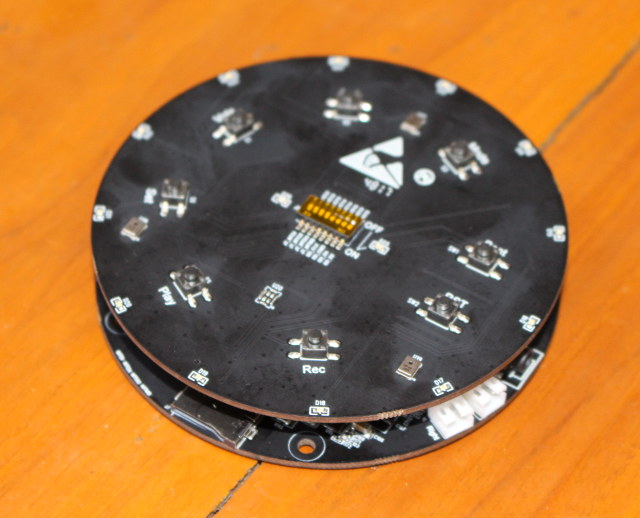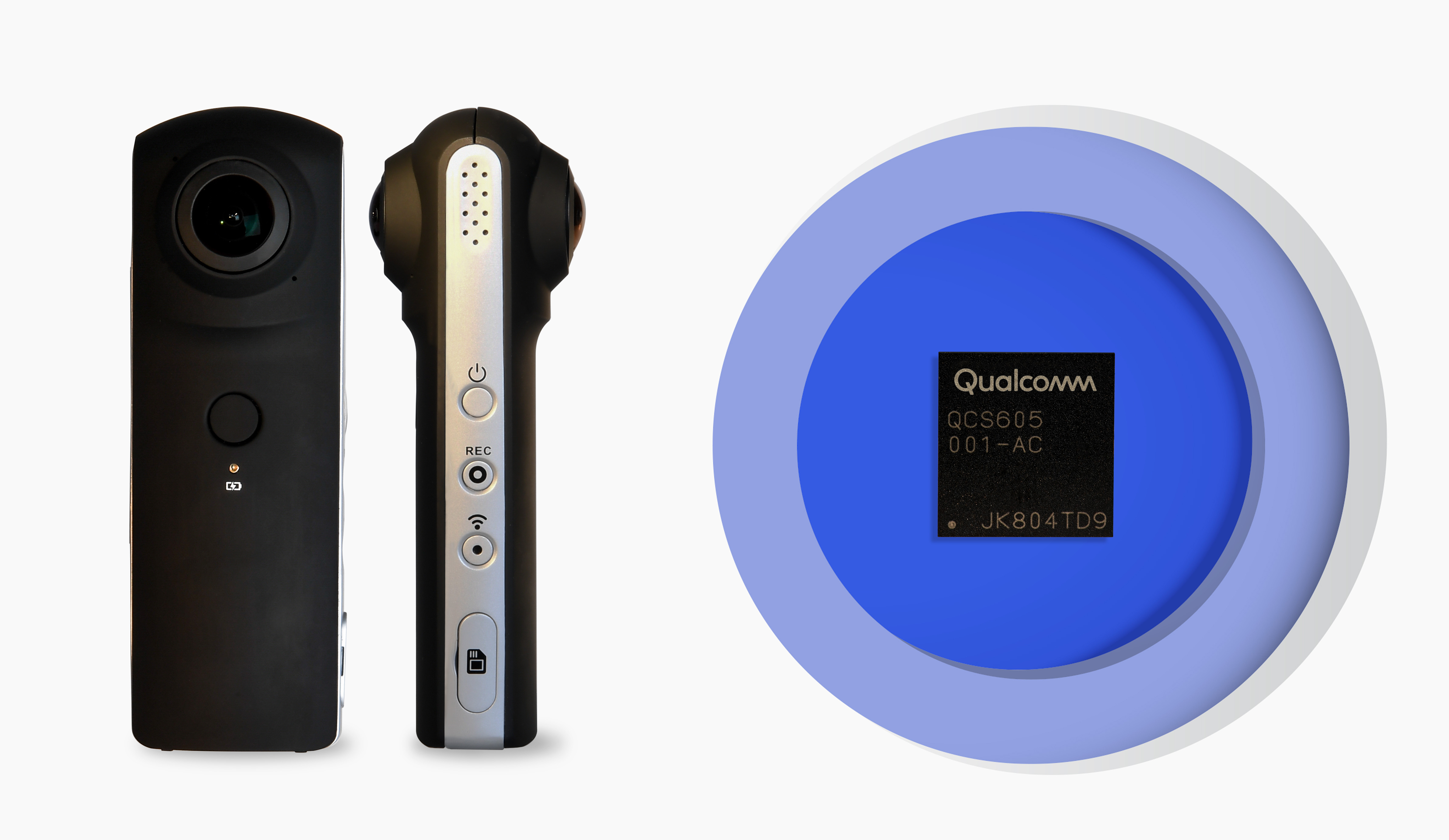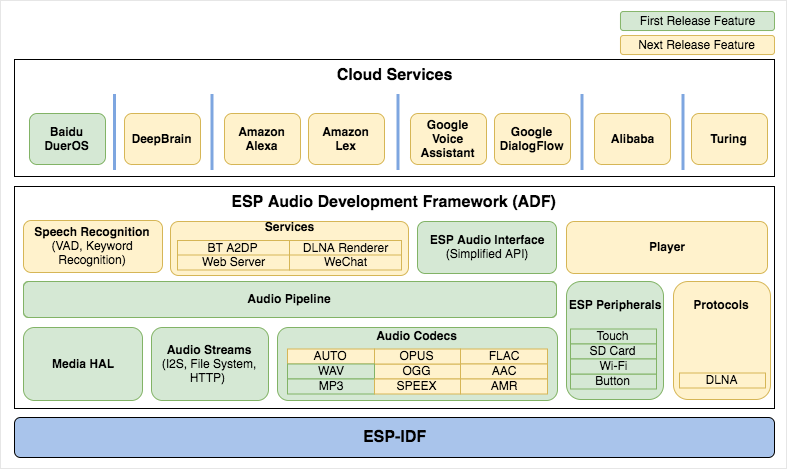When WiFi smart sockets (aka smart plugs) started to appear a few years ago, they were often only available with either US or China plugs, and users from Europe, UK or other locales may have had to use an adapter instead. Since then, products that ship with multiple versions such as Sonoff S26 or Orvibo Wiwo S20 have launched in order to cater to more people around the world. ITEAD has now launched another WiFi smart socket, namely Sonoff S55, that’s designed to work outdoors thanks to IP55 ingress protection rating, and is offered in six different variants for Australia, Germany, France, the United States, South Africa, and the United Kingdom. Sonoff S55 specifications: Input/Output S55TPI(AU) – AC 100-240V 50/60Hz 10A Max S55TPF(DE) – AC 100-240V 50/60Hz 16A Max S55TPE(FR) – AC 100-240V 50/60Hz 16A Max S55TPB(US) – AC 125V 50/60Hz 10A Max S55TPD(ZA)- AC 100-240V 50/60Hz 10A Max S55TPG(UK) […]
Qualcomm Mesh Networking DevKit Supports Amazon AVS
The Qualcomm Mesh Networking Development Kit for Amazon AVS enables integration of Amazon Alexa Voice Services into mesh Wi-Fi systems. A somewhat recent blog post on Amazon Developer website explains the devkit is the first ever Amazon-qualified reference design for a mesh WiFi system with Alexa built-in. The reference platform is based on the Qualcomm IPQ4019 SoC, includes a rectangular 4-microphone array, far-field audio processing algorithms for noise suppression, acoustic echo cancellation, wake word engine, and the AVS Device SDK. Qualcomm Mesh Networking DevKit specifications: WiSoC – Qualcomm IPQ4019 quad core Arm Cortex-A7 processor @ 717 MHz with SIMD DSP, WiFi 5; 40 nm process technology System Memory – 1GB DDR3L RAM Storage – eMMC flash and microSD card Display I/F – LCD interface Connectivity WiFi Standards: 802.11ac Wave 2, 802.11ac, 802.11p, 802.11n Bands: 2.4 GHz, 5 GHz Peak speed: 1.733 Gbps Channel Utilization: 20/40/80 MHz, 5/10/20/40 MHz MIMO Configuration: […]
Pico-ITX i.MX8M Board Enables Offline Voice Control with Snips
A few days ago, we covered Estone Technology’s MJ-100 RK3399 rugged tablet. I’ve just realized Estone Technology used to promote their embedded product under the Habey USA brand, which we covered a few times here, and the company has also announced another new product ahead of Embedded World 2019 with their EMB-2238 Pico-ITX i.MX8M board specifically designed for voice control applications. The company setup two voice control demos with the board: one with Amazon Alexa Voice Service (AVS) and another with Snips that works locally without any Internet connection. We actually came across Snips previously for an article comparing microphone arrays, but I never looked into Snips into details or saw an actual demo. Let’s have a quick look at EMB-2238 board specifications first: SoC – NXP i.MX 8MQuad with 4x Arm Cortex-A53 cores @ 1.5GHz, 1x Arm Cortex-M4 realtime-core @ 266MHz, Vivante GC7000L/GC7000LVX with support for OpenGL/ES 3.1, OpenGL […]
96Boards HiChips Parrot Board and 3-Mic Array Work with Amazon Alexa
Early last year, Banana Pi unveiled Allwinner SoC-Only 3-Mic Far-Field Development Kit for Amazon AVS, a board powered by Allwinner R18 processor extended with an external 3-mic array board, officially supported by Amazon Alexa Voice Service (AVS), and sold for $129 plus shipping. There’s now a compatible board following 96Boards CE Extended form factor, and selling for just $79.99 plus shipping on Alibaba or 555.99 CNY on 1688.com. The board looks almost the same as the original 3-Mic far-field development kit, apart from the LS and HS connectors found in the 96Boards hardware platforms. Hichips Parrot board should not be confused with Allwinner R16 based Parrot board that was used by Allwinner internally, and never made available to the general public. Hichips Parrot board specifications: SoC – Allwinner R18 quad-core Cortex-A53 processor @ 1.15GHz with Mali400MP2 GPU System Memory – 1GB DDR3 Storage – 8GB eMMC flash, micro SD card […]
Amazon Echo Look Camera Goes for $50 with Intel Atom x5, RealSense Camera SR300
Amazon Echo Look is a smart camera with Alexa Assistant that was launched about 2 years ago for $200, and designed to help you decide if your outfit is a good match, beside taking photo and video selfies with voice commands. Sales may not have matched Amazon expectations (unsurprisingly), and the product is now offered for just $49.99. What may be interesting for CNX Software readers is that Echo Look appears to be a consumer version of AWS DeepLens deep learning video camera for developers ($249), plus some cost savings as well, so there may be some hacking potential here. A teardown video – embedded below – reveals some interesting specifications: SoC – Intel Atom x5-Z8350 quad core Cherry Trail processor @ up to 1.44 GHz System Memory – 1 GB LPDDR3 Storage – 8GB eMMC flash, 16 Mbit SPI flash Camera – Intel RealSense SR300 depth sensing camera + […]
Giveaway Week – ESP32-LyRaTD-MSC Audio Misc HDK
ESP32-LyraTD-MSC is a smart audio hard development kit based on ESP32 WiSoC that I plan to send to one of my readers as part of Giveaway week. I had the chance to test ESP32-LyraTD-MSC with Baidu DuerOS voice assistant back in February which requires you to speak Mandarin, but now the board has become more useful outside of China with the release of Espressif ESP-ADF audio development framework and support for Amazon Alexa and Google Assistant. To enter the draw simply leave a comment below. Other rules are as follows: Only one entry per contest. I will filter out entries with the same IP and/or email address. Contests are open for 48 hours starting at 10am (Bangkok time) every day. Comments will be closed after 48 hours. If comments are open, the contest is still going on. Winners will be selected with random.org, and announced in the comments section of […]
Qualcomm QCS603/QCS605 “IoT” SoCs are Designed for AI and Computer Vision Applications
Qualcomm has unveiled the “Qualcomm Vision Intelligence Platform”, which aims at IoT devices with cameras leveraging artificial intelligence and computer vision. The first SoCs part of the platform are QCS605 and QCS603 manufactured with a 10nm process and equipped with an “advanced image signal processor” and the Qualcomm Artificial Intelligence (AI) Engine, as well Arm CPU cluster, Adreno GPU, and Hexagon DSP. QCS603 & QCS605 specifications: CPU QCS603 – 2x 1.6GHz Qualcomm Kryo 300 Gold cores, 2x 1.7GHz Qualcomm Kryo 300 Silver cores QCS605 – 2x 2.5GHz Qualcomm Kryo 300 Gold cores, 6x 1.7GHz Qualcomm Kryo 300 Silver cores Qualcomm Artificial Intelligence Engine DSP Qualcomm Hexagon 685 Vector Processor 2x Qualcomm Hexagon Vector eXtensions (HVX) GPU – Qualcomm Adreno 615 with OpenGL ES 3.2, Vulkan, OpenCL support Neural Processing – Qualcomm Snapdragon Neural Processing Engine programming interface with support for Tensorflow, Caffe/Caffe2, ONNE, Android NN; 2.1 TOPS @ 1w Memory […]
Espressif ESP-ADF Audio Development Framework for ESP32 Supports Baidu DuerOS, and Soon Amazon Alexa, Google Assistant, etc…
Espressif Systems have been working on audio applications like Smart Speakers based on ESP32 WiSoC with hardware development kits like ESP32-LyraTD-MSC Audio Mic HDK, and I could test it with Baidu DuerOS using Mandarin language. However, at the time (February 2018), there was not much else that could be done with the hardware kit, since no corresponding ESP32 audio software development kit had been made available. This has now changes since Espressif has just released ESP-ADF Audio Development Framework on Github. The framework will support the development of audio applications for the Espressif Systems ESP32 chip such as: Music player or recorder handling MP3, AAC, WAV, OGG, AMR, SPEEX … audio formats Play music from network (HTTP), storage (SD card), Bluetooth A2DP/HFP Integration with Media services such as DLNA, Wechat, etc.. Internet Radio Voice recognition and integration with voice services such as Alexa, DuerOS, Google Assistant As we can see […]


